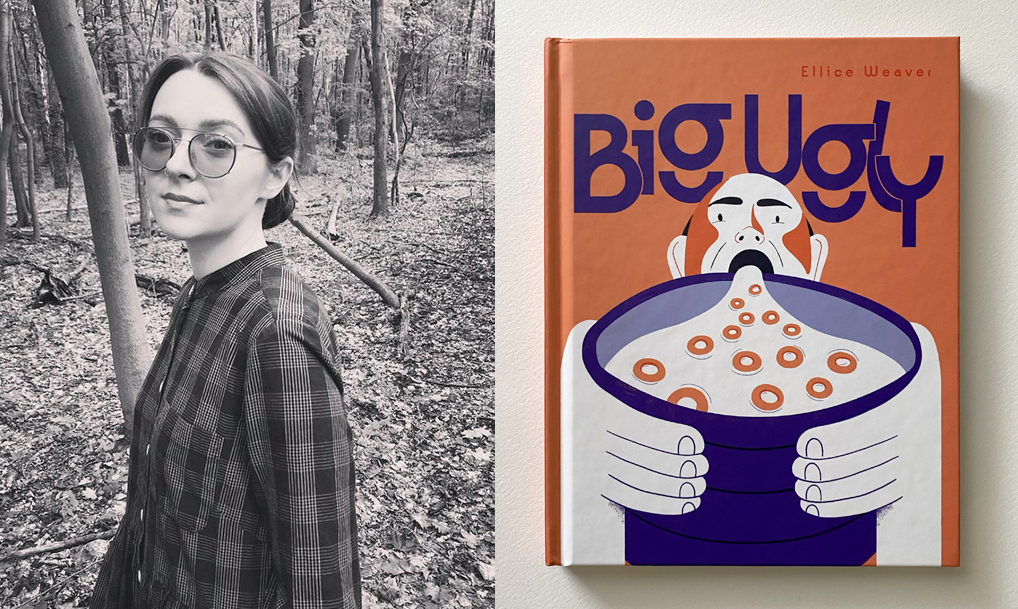
In this episode we talk to Ellice Weaver, the creator of Big Ugly. We talk world-building, being part of a cartooning couple, and loving your characters!
Subscribe: Apple Podcasts | RSS
 In this episode we talk to Ellice Weaver, the creator of Big Ugly. We talk world-building, being part of a cartooning couple, and loving your characters! Subscribe: Apple Podcasts | RSS
Below they’re interviewed about the book by Tom Humberstone, creator of the wonderful Suzanne – The Jazz Age Goddess of Tennis.  Tom: Macbeth is one of the most popular of Shakespeare’s plays for stage and screen adaptations. As with any Shakespeare adaptation, I would imagine there’s something both thrilling and daunting about being in conversation with centuries of other people’s interpretations. Were there any choices that other adaptations make that you were keen to avoid, or things that inspired or influenced your own approach? Have you felt frustrated that other adaptations misunderstood or missed a certain aspect that you felt was crucial to the play? Do you have a favourite? (except for yours of course!) Briggs: It is absolutely one of the most popular Shakespeare plays for adaptation! As I was working on mine not one, but two Macbeth films came out; both of which I avoided so as not to influence my interpretation mid-process. From the outset I wanted to pay close attention to the women of the play – what are their motivations? What are their relationships to power in this world? And then, what about the peasant population of Scotland? Where do they fit into these wars and upheavals? I’ve felt frustrated by their absence in other interpretations, and also the motivations of the Weird Sisters, Lady Macbeth, and Lady MacDuff being just “women are crazy”. I have a favorite! Throne of Blood, directed by Akira Kurosawa; Toshiro Mifune is sublime. 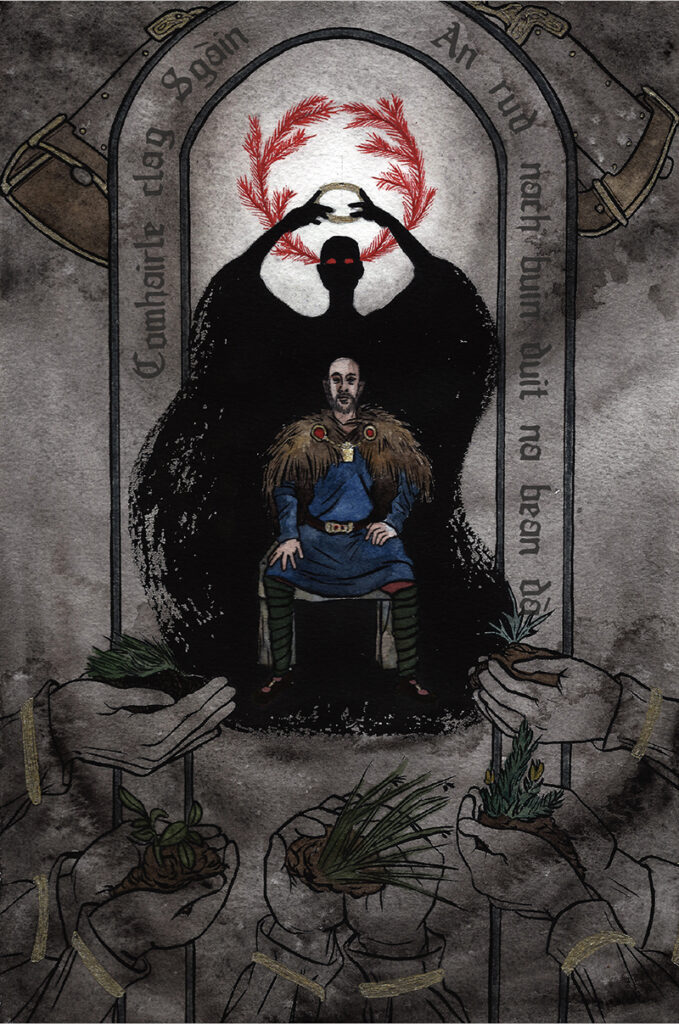 Tom: Am I right in saying that you drew a lot of this during lockdown? Did that impact the way you approached the adaptation or impact the way you felt about the play in any way? Briggs: Ooft, lockdown kind of blurs together, if I’m honest. But this book was pure escapism for me; I got to dive headfirst into my medieval art obsession and transport myself back to Scotland, which I miss terribly. Tom: On the page, there’s a lot of playful symbolism, experimental panel structures, and of course your gorgeous use of collage. I’m curious – was that all there in script-form before putting pencil to paper? Or did you discover things on the page? Or was it a mix of the two? I suppose I’m curious about your process here. How did you go from manuscript to finished comic? Briggs: The first step was to put page breaks in the script; how much information and dialogue could I logistically fit on a single page? I think Alan Moore once said no more than 250 words per page, so I started there, then considered what would make a complete thought on a single page. That takes time, and as I worked I changed a few things here and there, added an extra page to give space, etc. When it comes to the art, I think my process comes from my painter background – I don’t do a roughs pass, I just work up a page from start to finish, discovering it as I go. And I work out of order; since I have the script figured out already, I work on whatever page strikes my fancy on a given day. If I forced myself to work in order I’d get bored or rebellious; if I felt like drawing witches, I’d draw witches, simple as that. And then as far as the content of the pages, there’s what’s been said/done and there’s what it means. I try to incorporate something of what it means in every page. What going on between the words? Tom: The comics medium is an entirely different beast to the stage. Why did you decide that Macbeth needed to be told as a comic? And what do you think the medium was able to bring to the play that other mediums would struggle with? What were the challenges? Briggs: It’s a partially selfish answer – because I thought it was cool. Also, this book began life as a entry to the inaugural Graphic Shakespeare Competition back in 2016. There was a call for entries, so I sent in Act 1, Scene 1. There’s already an academic interest in Shakepeare as sequential art, and I can understand why. It’s the perfect balance – a reader of the play can’t get the extra information an actor’s interpretation would provide, a watcher of the play can’t go back and re-read a passage they didn’t quite catch, a watcher of a film adaptation is locked into the film’s pacing (unless they’re quick with the pause button). A comic has both visual and textual information and the reader is empowered to approach Shakespeare at their own pace. But a challenge that came up right away was sound effects; bells, thunder, lightning, and wailing all play important plot roles in Macbeth. 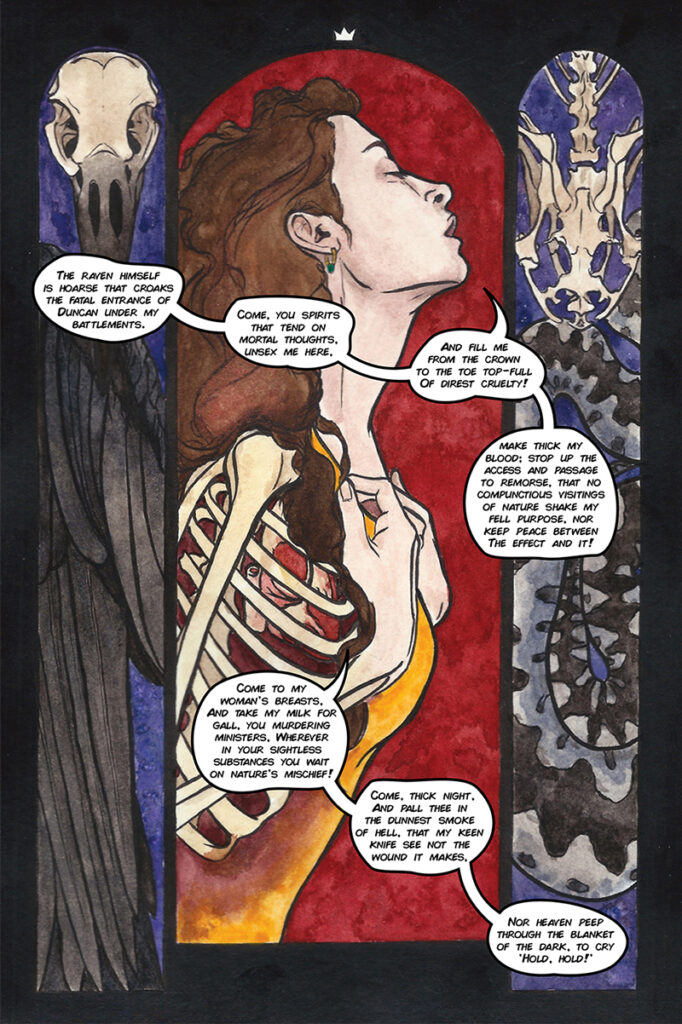 Tom: Do you have plans/hopes to adapt other Shakespeare plays as comics? Is there something about Macbeth that you felt worked especially well in comic form that wouldn’t work as well with other plays? Briggs: I have an idea I’m putting together about The Tempest. Another one of my favorites, it has multiple stories going on simultaneously that the play switches back and forth showing. It’d be great to do it with a few other artists, each of us getting to interpret a subplot of our own. The Tempest and Macbeth are some of the shorter Shakespeare plays, so that counts for something – 180 pages is the longest comics I’ve ever done! Tom: There’s an incredibly tactile quality to your art. With paint, tape, newsprint, pencils, gold leaf pens and countless other beautiful, tangible details. In my experience it can be hard capturing the quality of these things when scanning or photographing finished art. Was that tricky at all? Or is this something you are used to at this point? Briggs: Thank you, I appreciate that. I really enjoy creating those layered textures. It’d get tricky only when my collage got too deep for the scanner to pick up, then it’s a matter of setting up the most even lighting possible and taking a bunch of photographs to try to capture the effect. But as far as weird collage stuff, I’m used to it. And my long-suffering scanner can attest to the many hours its been subjected to me pressing down a collage as hard as I can onto its glass.  Tom: Another thing I noticed about your panel layouts: No two were exactly the same throughout the book. Was that always the plan going in? Did you associate certain layouts/colours/panel shapes with certain characters? For instance, I noticed the witches were portrayed using just black, white and red and the pages were divided into segments of three. Briggs: Yes, the Weird Sisters are always in grey tones with pitch-black robes and blood-red accents. I wanted them to be out of time and space with the rest of the book – they’re beyond time and the material plane, operating on their own dimension they sometimes allow Macbeth to access. In the very first scene they’re calling down the blood-red that will serve as a symbol for evil and nefarious deeds throughout the whole book. And yes, it was always the plan to not have a plan, to let every page and panel layout be in service to the text. However I felt I could be interpret what was going on internally and externally, that’d be the panel layout. Tom: A lot of the pages, by design, called to mind the Bayeux tapestry and stained glass windows. Are those art styles that have always fascinated you or was it more a case that they were especially suited for this story? Briggs: Yes! And medieval illuminate manuscripts. Western comics traditions are rooted in all of these, because they’re examples of sequential art, too. Comics, thanks to paper and the printing press, are just more accessible versions of these art making traditions. I’ve been obsessed with medieval European art for a long time, it’s so fraught and a brilliant combination of stylization and realism. What are the rules of medieval art? What’s a lion look like? Who knows! I love it. And then on top of that, the real historical Macbeth ascended to the throne of Scotland in 1040, so I wanted to also draw from what would have been his contemporary art cultures, such as the Book of Kells. Tom: A well-known aspect of making comics is that the artist is doubling as actor, make-up artist, costumer, set-designer, director, cinematographer, colourist, editor, stunt co-ordinator etc. – while that’s the case for all comics, it feels especially relevant here. As you sat down to work on a page, did the sense that you were putting on a full theatrical production on your own feel intimidating? Exciting? A combination of the two? Briggs: So exciting. As a teen I was a theater nerd, especially living for the Shakespeare performances we’d do once or twice a year. This comics became my own production of Macbeth, and of course I cast myself as the best part – Lady Macbeth. The most intimidating part was the fight scenes, I didn’t feel very confident in drawing bodies in action. So, practice! I drew pages and pages of gesture drawings to build up my skills.  Tom: At 180 pages, this was a huge undertaking. How did you keep yourself motivated, disciplined and on schedule? Did you have a strict routine? Any tips for how you tackled the mental and physical ups and downs of a long-form project like this? Briggs: Hoo boy, it was an undertaking indeed. But I tried to keep a “how do you eat an elephant? One bite at a time” mentality. Figure out how many pages per week I should ideally complete, and then celebrate every time I finished one. There’s a big dose of Know Thyself in there as well – I genuinely get a dopamine hit when I check something of a list, so I had multiple lists going. On my wall, in my sketchbook; every page done checked off somewhere where I could see my progress accumulating. I also kept production to standard business hours and didn’t make art on weekends; my partner works a 9-5 so it was important to me to make time to hang out together and have hobbies and downtime. Breaks and time off aren’t a luxury you “earn”, they’re a necessity to human life and the creative process. But it was intense. After I finished I took a whole month off to do nothing, and it took another three months after that before I wanted to drawing anything. Order your copy of Macbeth here! Tom Humberstone’s Suzanne came out in 2022. It tells the incredible story of Suzanne Lenglen, a woman who changed the face of sport and society in the trailblazing jazz age. This beautiful graphic novel explores how a figure both enormously influential and too-often overlooked battled her father’s ambition, bias in sporting journalism, and her own divisive personality, to forge a new path – and to change sport forever.  Ellice Weaver’s beautiful book Big Ugly comes out on the 20th June! You can pre-order a copy here. Below she’s interviewed about the book by Clio Isadora, creator of the wonderful Sour Pickles. 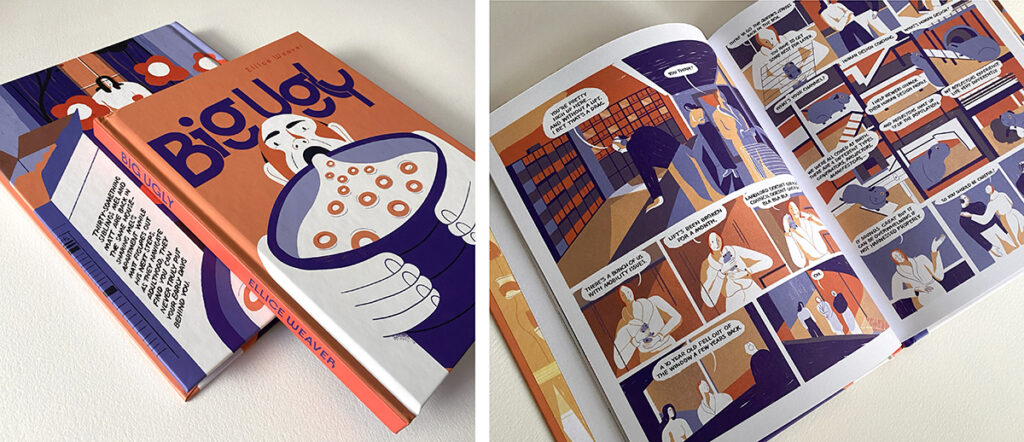 If you’re London-based, there’s going to be a launch party and exhibition for Big Ugly at the fantastic Jam Bookshop on the 22nd June! The exhibition will run until the 9th of July.
Ellice: I swapped from 50% analogue/50% digital to full digital. I used to paint everything and then put it together later in photoshop. But now I find it gives me the most freedom to just work digitally. I move around a lot and not needing the materials is a huge plus. 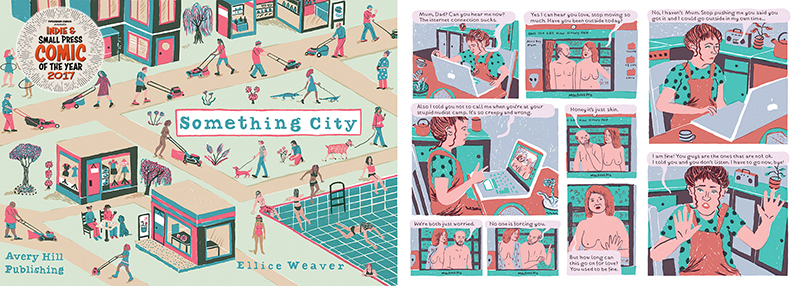 Clio: I loved your use of colour and how it transitions through the different scenes. Did you work with a set colour pallet or did you develop it as the story progressed? Clio: I enjoyed the dynamic between the two siblings in the story. Was this inspired by any real life relationships? Ellice: I’ve been thinking back to a lot of sibling dynamics that I’ve watched over the years and drew from a few of them. They’re just quite funny. I remember going to friends’ houses as a kid and seeing the most dramatic fights breaking out between sisters, I’ve rivaled with my own brother too. Sibling relationships can reduce sensible adults to full-blown toddlers. They just bring out something in someone which can be a bit ugly but also deep and sweet.  Clio: Big Ugly features an interesting character who does Human Design Coaching. I was curious to know how you developed this idea?  Clio: As another comic creator, I’m always curious to know how long it took to make a finished graphic novel. How long did it take you to make Big Ugly, from the initial idea until final submission?   Get your copy of Big Ugly here! Clio Isadora’s Sour Pickles came out in 2021. It’s s semi-autobiographical graphic novel about a girl struggling to finish the final year of art school, while surrounded by wealthy peers who have all the privilege and connections that she doesn’t. Grab a copy here! 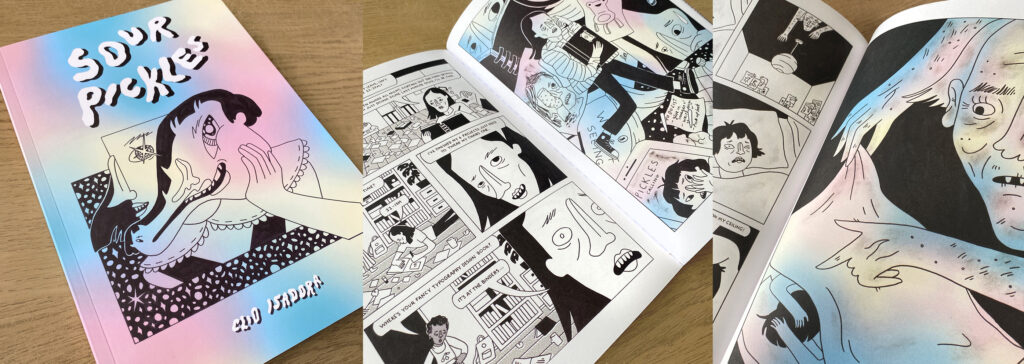 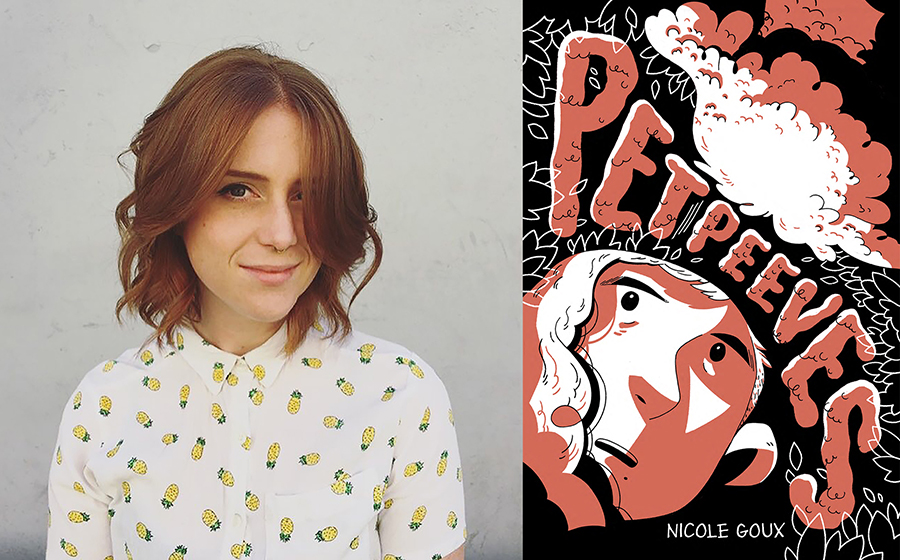 In this episode we talk to Nicole Goux, the creator of Pet Peeves. We talk storytelling, manga, the struggle to make things… and writing embarrassing songs in college! Subscribe: Apple Podcasts | RSS We can now announce three new books for autumn 2023! The Hard Switch by Owen D. Pomery Curses by George Wylesol The Wilderness Collection by Claire Scully 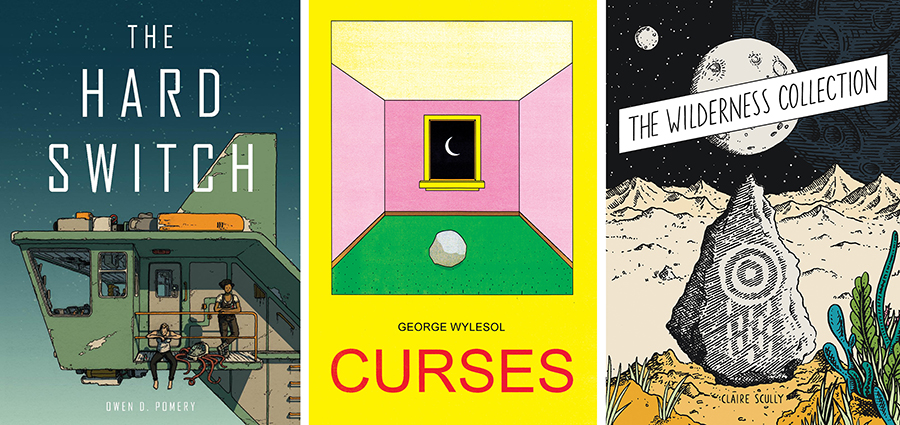 The Hard Switch will be hardback, 100 pages. The Wilderness Collection will be hardback with a dust jacket – 100 pages. Our third book of 2023 is now available to pre-order in the shop – Macbeth by K. Briggs! The first 75 orders will come with a gorgeous foil embossed bookmark.   Hardcover, 180 pages, full Colour A vivid graphic novel adaptation of Macbeth, with Shakespeare’s full, unabridged text. When three witches prophecy to Macbeth that he will one day become the King of Scotland, an epic of unhappiness, treachery, and blood begins. Macbeth and Lady Macbeth’s ambitions lead to an ever-growing path of murder as Macbeth grows ever-closer to the throne. But where will it all end? Only with death – and with madness. Influenced by the witches and magic of Macbeth, K. Briggs’s lush new graphic novel rendition of the classic provides a new interpretation of the Scottish play. Briggs, as a Shakespeare reader (and performer) from age twelve, brings their lifelong love of the Bard to this work. We also now have Big Ugly by Ellice Weaver back from the printer, and it’s absolutely stunning!   Our second book of 2023 is now available to pre-order in the shop – Big Ugly by Ellice Weaver! The first 75 orders will come with a gorgeous foil embossed bookmark. 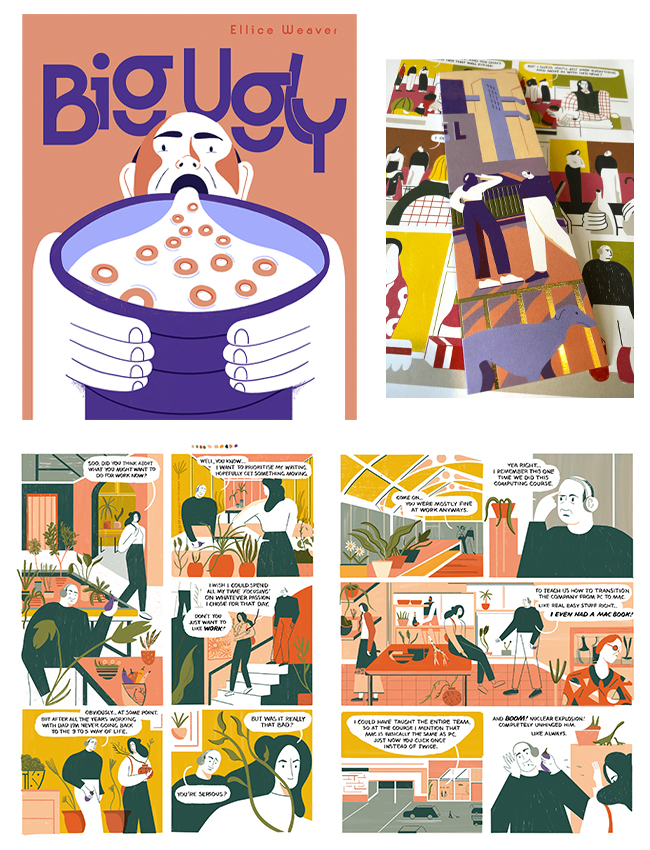 Hardcover, 128 pages, full Colour Work, health, family — Mel feels like her life is just circling endlessly as she begins to renew her relationship to her brother in this vibrant graphic novel. Mel isn’t going anywhere – except to work every day. But when she offers the spare room in her apartment to her struggling brother, everything she loves and hates about wanting to live up to the expectations of her family becomes part of her every day again. It turns out that even as adults, living with your sibling brings back the dynamics of tween rivalries. As Mel tries to rebalance things with her brother, she navigates how to offer help to someone who doesn’t want to need it. Renowned illustrator Ellice Weaver brings her crisp artwork to the graphic novel form in this powerful story of contemporary life. We now have our first book of 2023 available to pre-order in the shop – Pet Peeves by Nicole Goux! The first 75 orders will come with a gorgeous foil embossed bookmark.  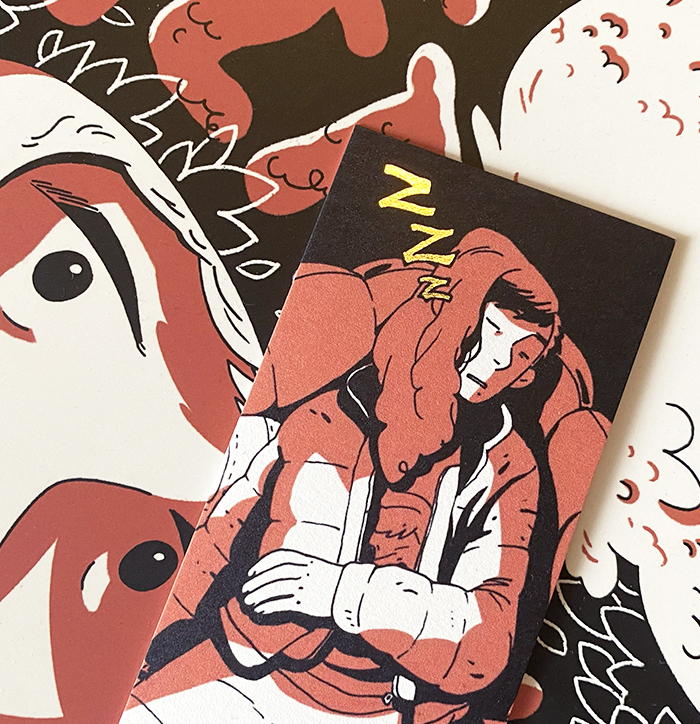 Softcover, 104 pages, Full Colour, 159 x 239mm In this horror graphic novel, the new dog that aspiring musician Bobbie has adopted is cute, but also stealing her life. Bobbie’s life is going nowhere fast. She’s working at a bar, wanting to play music but never having the time or energy. The only bright spot is her dog – always cheerful, always cuddly, and always there for her. As the relentless day-in, day-out of work piles up, music and roommates and social plans begin to seem less and less important as Bobbie struggles to make rent and have any time to be creative. The only thing she has time for outside her job is her dog . . . and her dog is going to do everything he can to keep it that way. This debut solo graphic novel from breakout author Nicole Goux explores the struggles of a young artist – haunted not only by debt and society, but by more sinister (though adorable) canine forces… As well as getting the rest of our 2023 books ready for print, we’ve also been doing some interviews to celebrate our ten year anniversary! Ricky also did a great interview over at Graphic Policy where he talked about our work but also discussed many wider topics including the state of comics publishing in the UK today, and how recent world events have affected comics publishing: One of our most recently-published authors Shanti Rai (creator of Sennen) also interviewed Reimena Yee on The Comics Journal this week! Big Ugly is your second long-form comic with Avery Hill, after Something City in 2017. Did you approach this book differently to the first? Something city was a book of short comics. It felt easier to go into it without too much of a plan. If the comics worked by themselves they were probably going to work together because they had the setting of the book in common. Big ugly is my first longer comic that tells one story which was something totally new for me. I had to go into it with more of a plan and less crossing my fingers and hoping everything made sense. You do a lot of freelance illustration work. What are the differences between that type of work and creating your own book? Comparing the two processes… are there things you enjoy and things that are more challenging with each? With illustration work, there’s a lot of quick satisfaction. You often wrap a project up within 2 weeks to a month max. I always get a kick out of the speed but because of the nature of comics, I feel like there has to be more dedication involved. The satisfaction of finishing a book and finishing an illustration isn’t comparable though. Finishing a book feels like a big life moment. I also feel more vulnerable when creating comics, I definitely put a little more of myself into comics. It’s actually great to switch between both, I’m always really looking forward to returning to drawing comics whilst in an illustration and visa versa. You call the book a “Post coming-of-Age”; what made you decide to focus on that point in life? Any personal experiences? I think it’s just a matter of relating more to that phase of life. It’s fun because it’s kind of neither here nor there time. I’m sure every phase of life comes with a lot of questions and thinking but for me, the late 20’s coming into 30 has been a very thought-heavy time. I think without it being autobiographical I put a lot of that into the book. Your illustration work is full of beautiful characters, did it feel strange working on two specific characters during the creation of Big Ugly? Do you feel like they’re part of your family now too? Thank you! It didn’t feel strange because of how long I was working on the book. I had massive pauses throughout but I started the book in 2018 so it wasn’t an intense period of drawing the same characters over and over. It felt really joyful to draw the characters and make them feel things and speak. Sort of like how animation brings illustration to life. It’s a proud feeling of like, ‘aw my characters say stuff and I relate to them’. How did you create the artwork for the book, what tools did you use? Straight up digital, photoshop. Nothing flashy. I’m always grateful to work digitally. I move around a lot and do a lot of house-sitting and live on a boat so it’s important to be super mobile. I have a little chair extension that makes any seat ergonomic so I take that and my tablet. . . it always feels like a walking studio. Finally, what do you hope people take away from reading Big Ugly? I would like to think it was a little funny and hope that the characters are likable even in their less pleasant moments. I think it’s been on my mind a lot lately because I literally had a dream last night that my book came out and it got very good critiques, mostly 5 stars… the only problem was, that it wasn’t a book at all but an actual easter egg. With the cover as a foil and it was super chocolaty. I don’t know what that means… 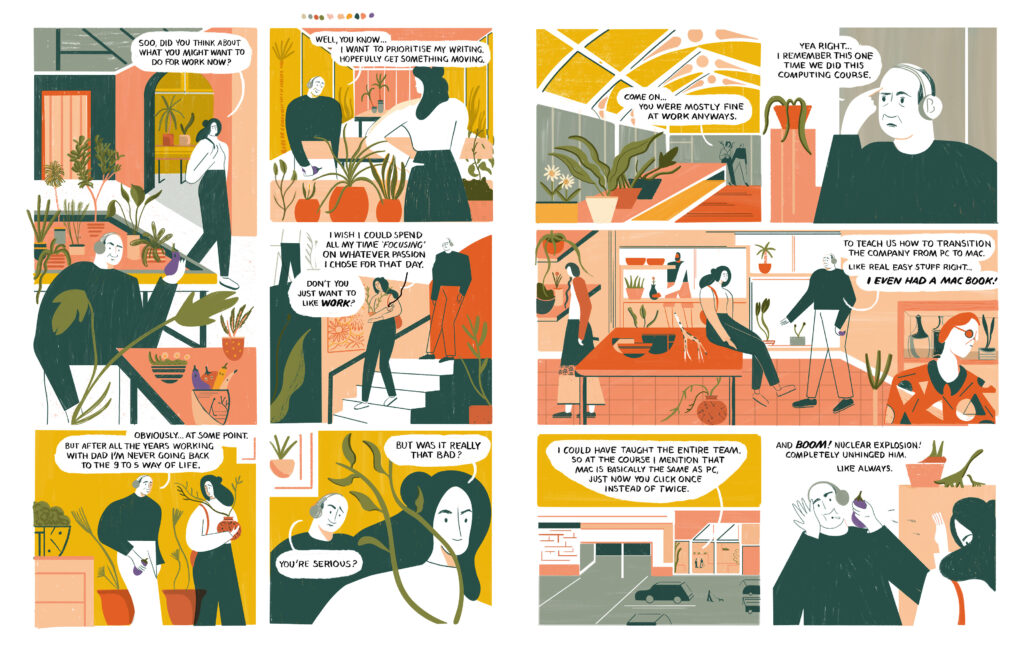 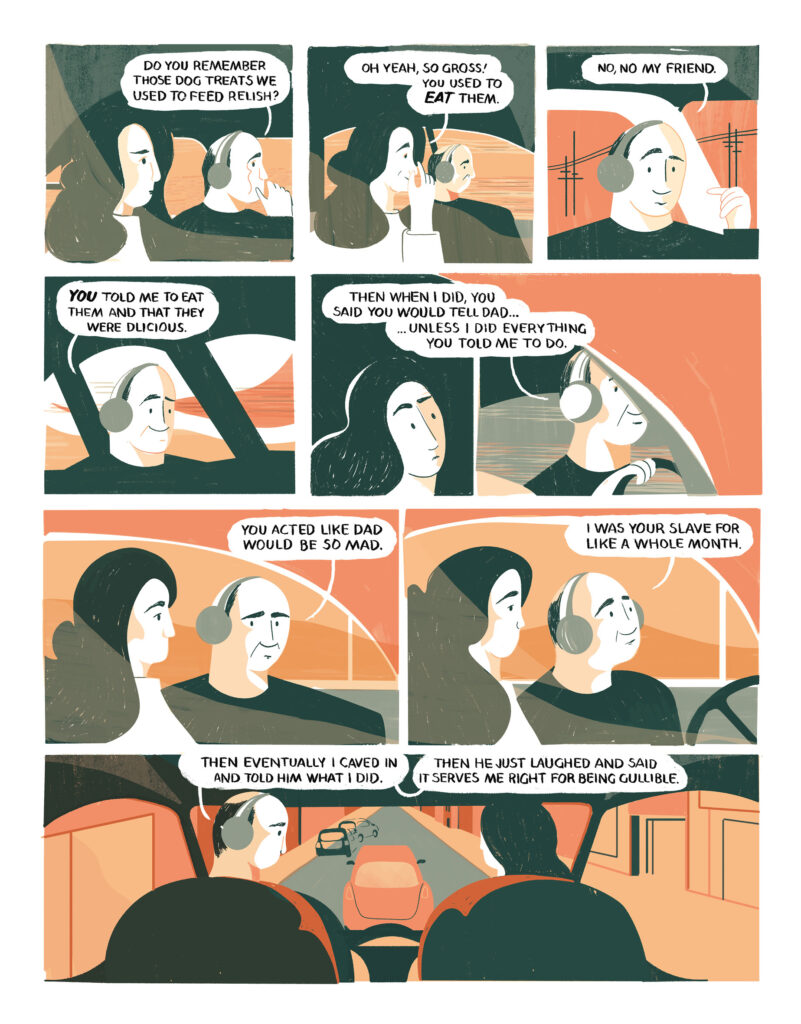 Back Big Ugly here: https://www.kickstarter.com/projects/averyhillpublishing/avery-hill-publishing-spring-2023-line If you follow our social media you will have seen the amazing print that Tillie Walden made for us to celebrate our ten-year anniversary. We’ve now added this as an add-on to the kickstarter campaign, so you can pre-order it by adding it to your pledge on checkout. This print is A4, beautifully printed on quality paper, and a limited run of 200. They’ll be signed/numbered by Tillie. Pre-order the print by adding it to your kickstarter pledge here! https://www.kickstarter.com/projects/averyhillpublishing/avery-hill-publishing-spring-2023-line |
||||||
|
Powered by WordPress & Atahualpa |
||||||